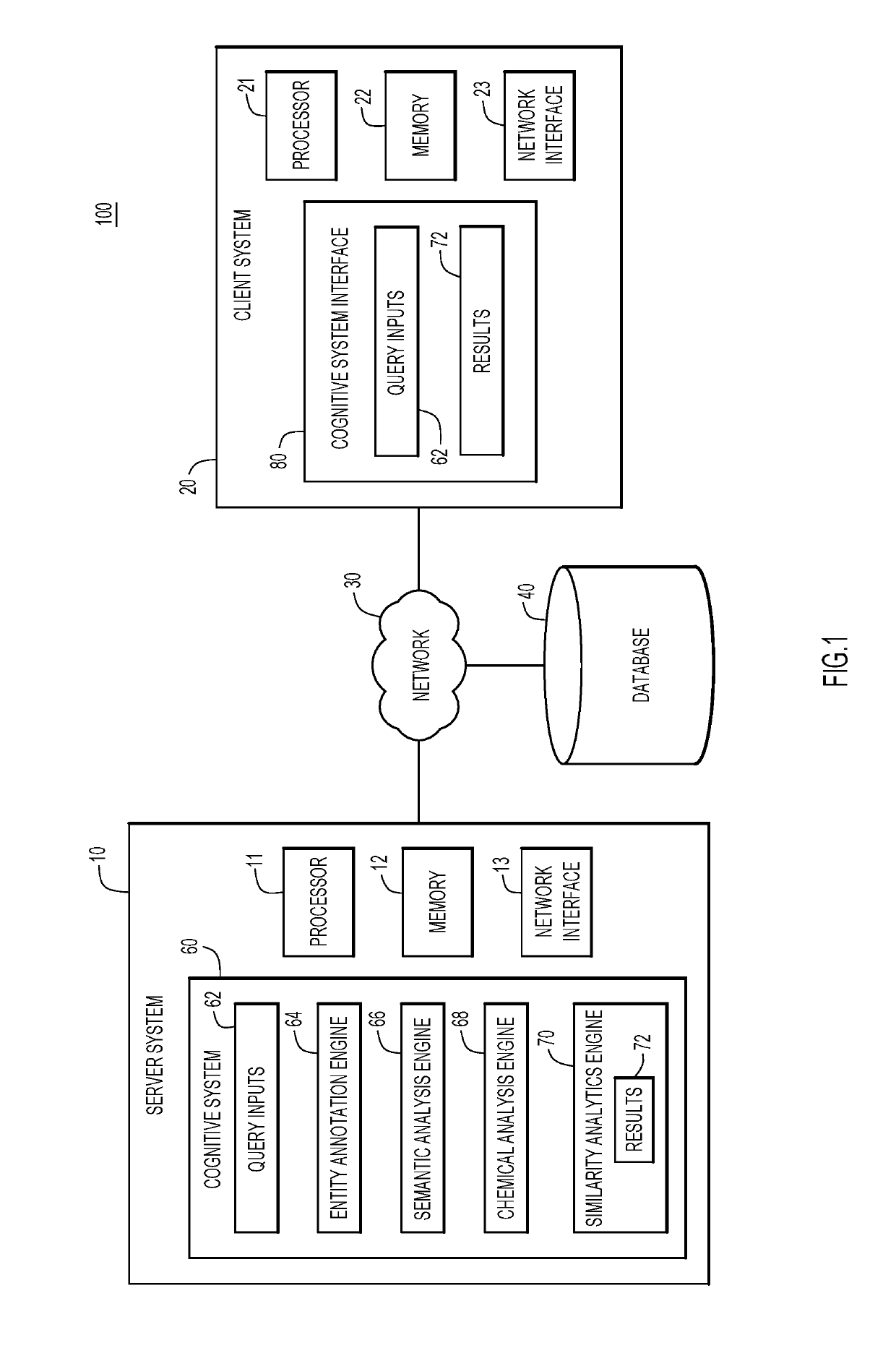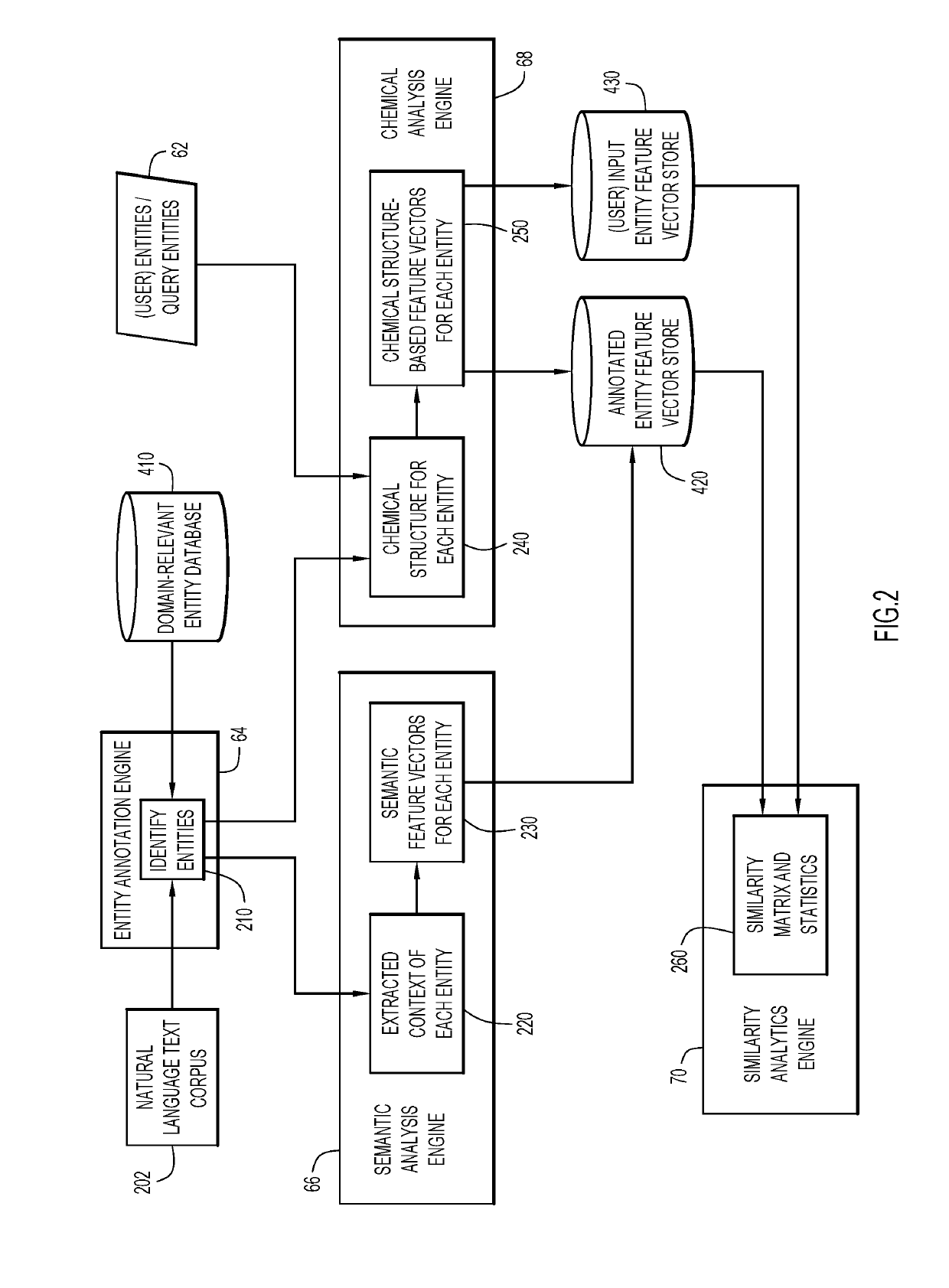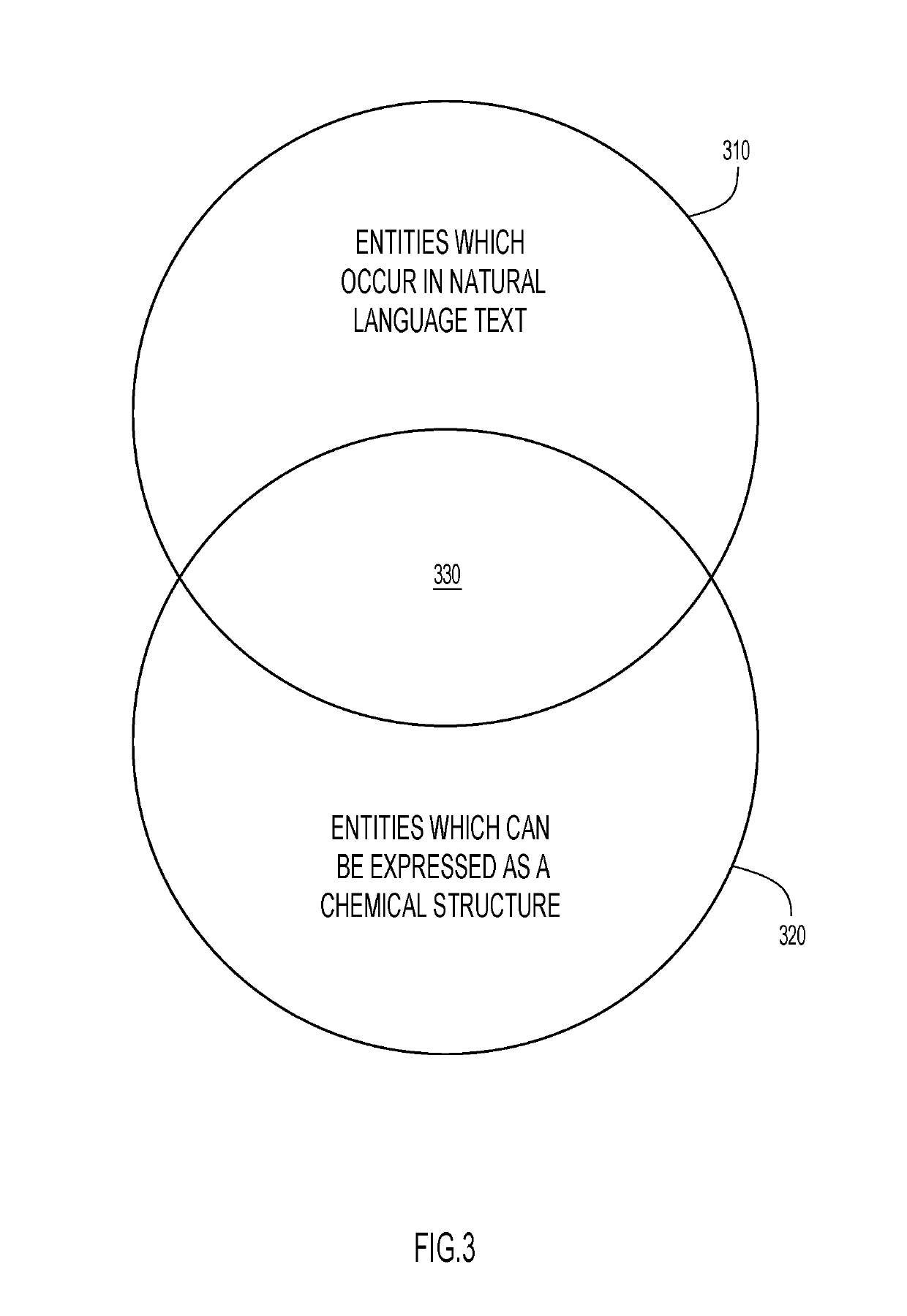Combining chemical structure data with unstructured data for predictive analytics in a cognitive system
a cognitive system and chemical structure technology, applied in the field of predictive analytics, can solve the problems of limiting the analysis of data to a single type of data, limiting the representation of data concepts to those that are able to be presented with unstructured data, and not capturing other relevant properties
- Summary
- Abstract
- Description
- Claims
- Application Information
AI Technical Summary
Benefits of technology
Problems solved by technology
Method used
Image
Examples
Embodiment Construction
[0015]Techniques are provided for combining chemical structure-based and unstructured text-based analytics for similarity-based comparison of entities for predictive analytics in a cognitive system. Feature vectors may be generated to represent the chemical structure-based information and the unstructured text-based information. Both types of information may be used (or in some cases, if an entity may be represented by one dimension of data, text or chemical structure, the entity may be analyzed in a multidimensional manner) for the comparison of entities and for predictive analytics applications.
[0016]An example environment for use with present invention embodiments is illustrated in FIG. 1. Specifically, the environment includes one or more server systems 10, and one or more client or end-user systems 20. Server systems 10 and client systems 20 may be remote from each other and may communicate over a network 30. The network may be implemented by any number of any suitable communic...
PUM
 Login to View More
Login to View More Abstract
Description
Claims
Application Information
 Login to View More
Login to View More - R&D
- Intellectual Property
- Life Sciences
- Materials
- Tech Scout
- Unparalleled Data Quality
- Higher Quality Content
- 60% Fewer Hallucinations
Browse by: Latest US Patents, China's latest patents, Technical Efficacy Thesaurus, Application Domain, Technology Topic, Popular Technical Reports.
© 2025 PatSnap. All rights reserved.Legal|Privacy policy|Modern Slavery Act Transparency Statement|Sitemap|About US| Contact US: help@patsnap.com



